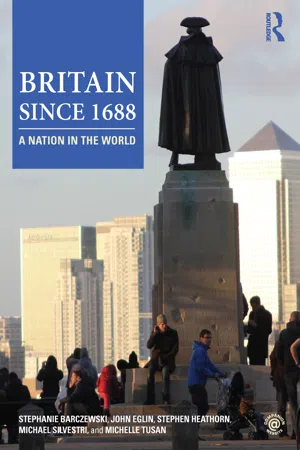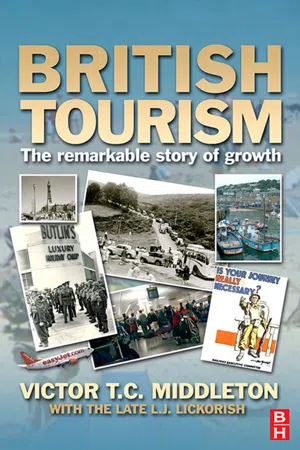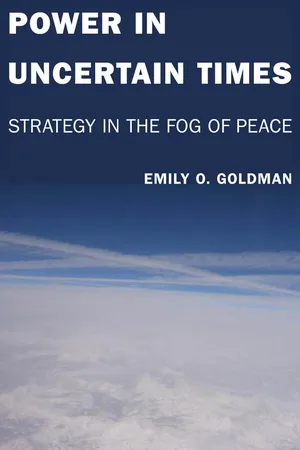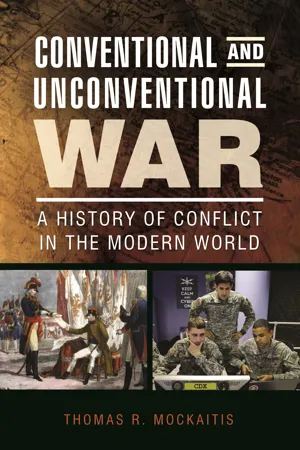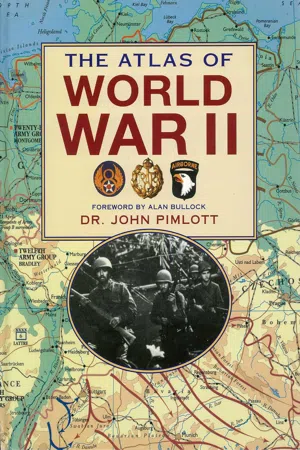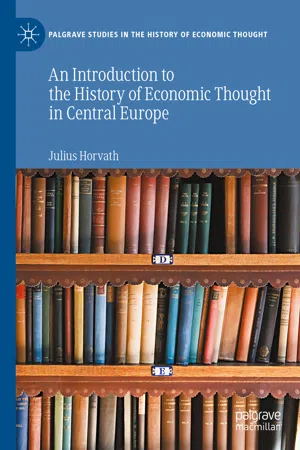History
Interwar Period
The Interwar Period refers to the time between the end of World War I in 1918 and the beginning of World War II in 1939. It was characterized by significant political, social, and economic upheaval, as well as the rise of totalitarian regimes and the Great Depression. The period also saw the establishment of the League of Nations and the rearmament of several countries.
Written by Perlego with AI-assistance
Related key terms
7 Key excerpts on "Interwar Period"
- eBook - ePub
Britain since 1688
A Nation in the World
- Stephanie Barczewski, John Eglin, Stephen Heathorn, Michael Silvestri, Michelle Tusan(Authors)
- 2014(Publication Date)
- Routledge(Publisher)
10 The interwar yearsTopics covered• Britain’s role in the new international order • Rise of nationalism in the British Empire • Changed political landscape after the First World War • Economic depression, structural unemployment, and labor unrest • Interwar Scotland and Wales • Irish independence • British society and culture in the “Jazz Age” • Appeasement in the 1930sTimeline1918 First postwar general election 1919 Paris Peace Conference 1922 Irish Free State established 1924 First Labour government 1926 General Strike 1929 Wall Street Crash; beginning of the Great Depression 1931 “National Government” formed under Ramsay MacDonald 1931 Statute of Westminster 1935 Government of India Act 1936 Abdication crisis 1938 Munich Pact 1939 Britain declares war on Germany IntroductionThe First World War did not completely shatter British society, as was the case for a number of other European combatants. Even so, the British economy was fundamentally disrupted, social relations were thrown into a state of flux, and the political landscape was permanently reshaped. Historians have tended to characterize the period between the end of the First World War in 1918 and the start of the Second in 1939 as “lost decades” that were dominated by unemployment, economic decline, intensifying ideological conflict, and growing international tensions. There is much truth in this depiction: Britain’s economy was fundamentally altered by the war, and Britain’s leaders often proved unable to cope with the crises that ensued. Instead, they tried the solutions of the past, which did little to solve the country’s economic problems, particularly after a global depression began after 1929. To be sure, the difficulties varied by region, age group, and social level. Some economic sectors performed well, and the standard of living improved for many people. But in general, this was a troubled and unsettled period in which few people felt secure. - eBook - ePub
- Leonard J Lickorish, Victor T.C. Middleton(Authors)
- 2010(Publication Date)
- Routledge(Publisher)
CHAPTER 1
The inter-war years 1919 to 1939 and the impact of the Second World War (1939–45)
Royal Commission on the Distribution of the Industrial Population (Pimlott, 1940, p. 240)Evidence suggests that the growth of the services represented by such [seaside and other holiday] resorts, including the services of transport, has been among the most rapid forms of economic growth since the [1914–18] war, and that its effect upon the movement of the population has been of the first importance.In the twenty-first century there are many who appear determined to live in what Eric Hobsbawm termed ‘a permanent present’. Some, perhaps, to quote LP Hartley’s famous aphorism, because ‘the past is a foreign country; they do things differently there’; others, because they fail to see the relevance of past events to modern times. But it is also widely agreed that those who forget their history are condemned to repeat it. At least one can safely argue that most of the seeds of the future can be traced in the past. For tourism this is especially true of the inter-war years. In many ways it was a sad and tragic period lasting only 21 years, characterized by grinding unemployment and poverty for many in the 1930s. Such conditions facilitated the rise of ruthless dictatorships in Germany, Russia, Italy and elsewhere in Europe that would set the scene for the Second World War. But it was also a time of great incipient change, especially in the social conditions of the population, emerging lifestyles, better communications, growing political awareness and action. This period witnessed a transition away from the Victorian Age toward the new world of greater individuality, mobility and innovation in most spheres of daily life, and especially in leisure and travel. Against what one might suppose, as this chapter notes, it was also a period of remarkable growth in travel and tourism and of developing social ideas that are still easily traceable today. - eBook - ePub
Power in Uncertain Times
Strategy in the Fog of Peace
- Emily Goldman(Author)
- 2010(Publication Date)
- Stanford University Press(Publisher)
4 INTER-WORLD WAR PERIOD, 1918–1939
IN THE YEARS BETWEEN THE TWO WORLD WARS , Europe and Asia experienced significant political upheaval. On the Continent, once great powers that had sustained tremendous human losses now faced huge war debts and the daunting task of physical reconstruction. A vanquished Germany, bound by the Versailles Treaty, confronted revolutionary attacks from the left and right. Revolution and civil war challenged Russia. The Ottoman Empire was destroyed and dismembered. Great Britain, France, and Italy, with few resources to spare, struggled to defend their weakening hold on foreign territories. The United States, by contrast, emerged from war virtually invulnerable, while in Asia Japan was poised to continue its rise along the trajectory set by the Meiji Restoration and cemented by its defeat of Russia in 1904–1905.Technological changes were reshaping the battlefield in equally significant ways. Improvements in internal combustion engines, aircraft design, radio, and radar vastly enhanced their military utility. The great powers experimented with different ways to use these technologies, making possible the tactics of blitzkrieg, carrier aviation, modern amphibious warfare, and strategic aerial bombardment. Entirely new kinds of military formations appeared, like the panzer division, carrier battle group, and long-range bomber force.1 Over a twenty-year period, the nature of conflict changed significantly, but the course of transformation was far from clear at the time. Debate over the role and mix of armor, infantry, mechanized infantry, and artillery assets in ground operations; of fighters, bombers, and ground support aircraft in air operations; and of aircraft carriers, surface combatants, and submarines in naval warfare raged vigorously up until the Second World War. So too were the operational concepts governing their use and the proper integration of ground, naval, and air power hotly contested.2 - eBook - ePub
Conventional and Unconventional War
A History of Conflict in the Modern World
- Thomas R. Mockaitis(Author)
- 2017(Publication Date)
- Praeger(Publisher)
CHAPTER NINE The Interwar PeriodFuture historians may view World War II as a continuation of World War I, just as those who study ancient history now see the Punic Wars between Rome and Carthage spanning more than a century as part of the same struggle for hegemony in the western Mediterranean. In Europe the same belligerents faced one another, with the exception of Italy, which switched sides, and Turkey, which remained neutral. Once again fears over German hegemony on the Continent led to an alliance to oppose it. To a significant degree, the conflict resulted not from World War I itself, but from the vindictive peace that had ended it. Germany resented the loss of territory in 1919 just as much as France had in 1871. Humiliating disarmament, crippling indemnity payments, and the infamous war-guilt clause of the Treaty of Versailles (1919) forcing Germany to accept sole moral responsibility for the war piled insult on top of injury. These factors did not make another war inevitable, but they certainly made one more likely and guaranteed that if it did occur, Germany would seek revenge.As the dominant power in Asia, Japan sought to build an empire. While it had the population and military strength to expand, lack of vital resources such as oil, iron ore, and rubber left the country vulnerable to an embargo. Those resources, however, lay in territories controlled by European empires. To gain unfettered access to them would bring Japan into conflict with the world’s two greatest naval powers, Great Britain and the United States. If Japan stood any chance at all in such a contest, it could only be under circumstances in which the other powers found themselves facing conflict far closer to home. Conditions in Europe and Asia thus guaranteed that the next conflict would truly be a world war, unlike the previous one fought primarily in Europe.These disturbing trends and conditions, however, did not make World War II inevitable. Many people in Europe viewed the Great War as a terrible tragedy that must not be repeated. The victors made some effort to mitigate the harsh terms of the Versailles Treaty. The former belligerents formed an international body to arbitrate disputes and entered into agreements to limit armaments. That these measures failed to preserve peace owed as much to what began in 1929 as to what took place in 1919. Without the debilitating effects of the Great Depression, the right-wing National Socialist Workers Party, a fringe party throughout the decade, would probably not have come to power. The interwar years must thus be seen as a complex era in which military development continued as at least some leaders sought to avoid war. - eBook - ePub
- Charles P. Kindleberger(Author)
- 2015(Publication Date)
- Routledge(Publisher)
Part Four The Interwar PeriodIntroduction to Part Four
The financial history of Europe encounters a marked discontinuity in 1914. The hundred years of relative peace before that watershed saw well-sustained growth, and steady development of financial institutions including the gold standard, joint-stock banking, monetary management and international lending on a world scale. The width and depth of the war from 1914 to 1918—the first to be called a world war—produced monetary disorder on an enormous scale. Efforts to reconstruct the financial system of Europe after the hostilities, moreover, yielded a widely disparate set of results.Chapter 16 (pp. 291–309) opens with the financial crisis of August 1914 that links the narrative to the analysis of crises in the previous chapter. It then proceeds to the unsophisticated theories of war finance, and lax methods employed, that stored up monetary disorder for almost a decade. The position was complicated by the insistence by France on collecting massive reparations from Germany, after herself having paid a sizable indemnity to Germany in 1871–2, and by the parallel insistence on the part of the United States that she should collect on the loans to the Allies made during and immediately after the war—the so-called war debts. The war also produced a spectacular increase in the economic and financial power of the United States that rivalled the world position of leadership of western Europe. The story of reparations and war debts is carried to completion in 1932 before returning in three chapters to the 1920s problems of Germany, Britain and France (with a short section on Italy).The financial aftermath of war produced sharply different results in Germany, Britain and France. As Chapter 17 - eBook - ePub
- John Pimlott(Author)
- 2022(Publication Date)
- Skyhorse(Publisher)
Adolf Hitler painted by Jacobs.PART I"The Inter-War Period,1919–1939World War I (1914–1918) left a number of legacies. At one level, there was an understandable desire to avoid such a nightmare again, particularly among those European states that had suffered substantial losses in both men and material. This was manifested in calls for disarmament and international cooperation, based on a “new world order” that had at its center the League of Nations, established in 1920. But there was also a steady growth in political extremism, reflecting the enormous social changes triggered by the conflict and the unsatisfactory nature of the peace settlement that emerged between 1919 and 1921. At the same time, the military lessons of the war could not simply be forgotten. The impact of new technology, on land, at sea and especially in the air, altered the way in which force could be used for political ends, offering alternatives to the attritional deadlock of 1914–18 which made that bloodbath seem an aberration. To the optimists, it may have been “the war to end all wars”, but to many it was merely one more step in man’s inexorable journey to Armageddon.These emotions and beliefs became apparent very quickly. In countries such as Britain and France, where the victory of 1918 seemed small recompense for the human losses incurred, war-weariness was shown in calls for rapid demobilization and disarmament. Indeed, the British Army – over three million strong in 1918 – was reduced to pre-war levels and returned to the “proper soldiering” of colonial policing so quickly that much of the hard-won experience of the war years was forgotten. Moreover, as the peacetime period progressed, the desire to avoid a repetition of the recent conflict did not diminish. Memoirs of the war abounded, many of them stressing the suffering, hardship and waste involved, while the new medium of film portrayed the reality of trench deadlock to the next generation. To the survivors of 1914–18, there was little glory to be found in war. Small wonder, therefore, that when Britain and France entered a new conflict in 1939, they did so not with the jingoism of 1914 but with an air of resigned determination. - Julius Horvath(Author)
- 2020(Publication Date)
- Palgrave Macmillan(Publisher)
All these adverse effects were multiplied by the Great Depression, which strengthened those who would envisage Central Europe future in radical political options. Intellectuals and economists felt that something was vitally wrong with capitalism. Fascism gained popularity in some places as well as Soviet-type central planning as both of these new organizations of society were less exposed to recession and unemployment than the traditional capitalist market societies. Economic difficulties mounted and created the backbone for introducing authoritarian systems in Central Europe, which were still less radical, in the Interwar Period, than the reality in Germany and the Soviet Union. Aldcroft and Morewood (1995), and Aldcroft (1997). Economic Thought in the Interwar Period In the period after World War I, institutionalization and professionalization of economics as an academic discipline happened. Improving the quality of the universities and their scientific produce was considered an essential factor in the respective countries’ nation-building process. After 1918, the new nations began to build modern universities where the language of instruction was predominantly the native language of the majority of the population. 8 In the Interwar Period, state institutions were re-built with the need for many experts into the state bureaucracy. That led to the foundation of new universities and research institutes as Szkola Glówna Handlowa in Poland, Comenius University in Bratislava, and others. Similarly to the second half of the nineteenth century, we observe the influence of erudite university professors as Karel Engliš, Ákos Navratil, Farkas Heller, Imrich Karvaš, Edward Lipiński, and others. Some of them had achieved high governmental positions. In Poland, Michal Kalecki and Oskar Lange began their career in this period
Index pages curate the most relevant extracts from our library of academic textbooks. They’ve been created using an in-house natural language model (NLM), each adding context and meaning to key research topics.
